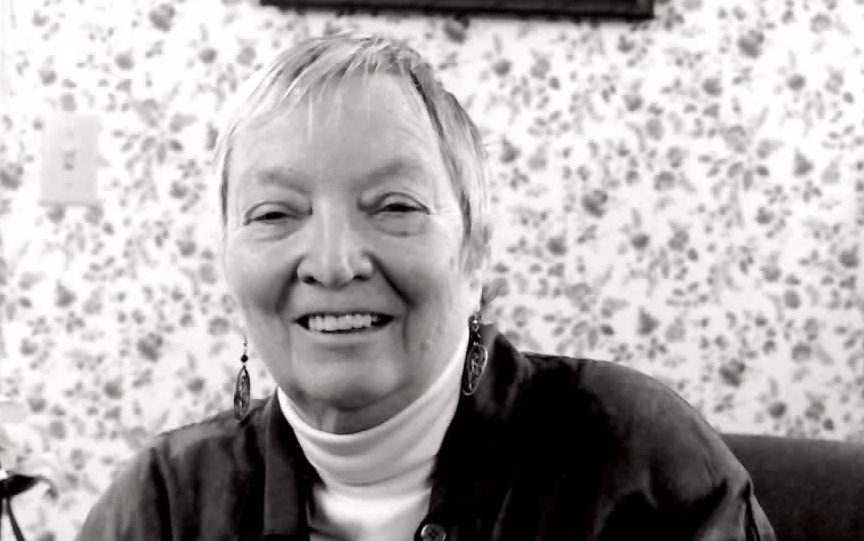One day in fourth grade, I checked out from the library a book with a teal jacket bearing intersecting light green circles; it was titled A Wrinkle in Time. “If I’ve ever written a book that says what I believe about God and the universe, this is it,” the author, Madeleine L’Engle, wrote in her journal—and by the time I went to bed that night, I knew I had discovered something I hadn’t encountered before: a book that opened doors in my mind and heart I’d never even known existed. Groping after new ideas about God and myself, I was filled with wonder and excitement. My rather dismal, lonesome world was suddenly lit with shafts of magical light.
“A book, too, can be a star,” Madeleine said about A Wrinkle in Time in its 50th-anniversary edition, “a living fire to lighten the darkness, leading out into the expanding universe.” That is exactly what A Wrinkle in Time was for me.
The characters—Charles Wallace, Calvin, Mrs. Which, Mrs. Whatsit, Mrs. Who, and most of all Meg—became my new friends. I knew they understood and liked oddball me. I spent hours with them in my imagination, soaking up their wisdom and acceptance. I also read and reread the book, wrapping myself in the reassuring message that it’s OK to be different from everyone else.
A few years later, when I discovered Madeleine L’Engle had written a sequel to A Wrinkle in Time, I was eager to rejoin my friends Meg, Charles Wallace, and Calvin. I was also excited to make new ones: Proginoskes the singular cherubim, Louise the snake, and the farandolae, creatures so tiny they fit inside a human cell’s mitochondria. As I read A Wind in the Door, Madeleine introduced me to still more new ideas about God and myself. They slipped into my head, finding places to curl around my fairly traditional ideas about the divine and then taking root, sending out new green shoots over the years.
Madeleine L’Engle’s books laid the foundation on which I built my ever-expanding image of God. She also taught me that when it comes to learning about God, we must be constantly willing to let go of what we think we know in order to grasp something grander, clearer, more brilliant. “I do not think that I will ever reach a stage when I will say, ‘This is what I believe. Finished,’ ” Madeleine wrote. “What I believe is alive . . . and open to growth.” She taught me that it’s OK to doubt and question, because that is how we grow.
Throughout middle and high school, I searched for more books by Madeleine L’Engle. I read Camilla, Meet the Austins, A Ring of Endless Light, A Circle of Quiet, and many others. With each book, I got to know Madeleine better. At the same time, she was always opening windows in my mind to a vast reality spangled with starlight and wonder.
Madeleine, I knew, was a kindred spirit. Like me, as a young person, she was an outsider with few friends and a lonely home life. She spent hours alone in her bedroom, just as I did, reading, writing, and pretending. Like me, she discovered connection to God through gazing at the stars. “When I look at the galaxies on a clear night,” she wrote in And It Was Good, “when I look at the incredible brilliance of creation, and think that this is what God is like, then instead of feeling intimidated and diminished by it, I am enlarged . . . I rejoice that I am a part of it.”
Madeleine’s imagination was the antenna she used for probing spiritual reality, and she gave me permission to do the same. At a time in my life when I doubted pretty much everything about myself, Madeleine assured me I was fine just the way I was.
She also promised me I was not as alone as I felt. The universe, Madeleine’s books insist, is filled with loving beings who are working together to spread light. “I can fight the darkness,” Meg tells herself at the end of A Wrinkle in Time; “I am not alone.” I was inspired and encouraged by the same realization.
Despite their deep spiritual messages, Madeleine L’Engle’s books were often considered controversial. Conservative evangelicals lobbied against them, accusing her of promoting witchcraft and New Age theology. Today, A Wrinkle in Time is one of the most frequently banned books. It also, however, won a Newbery Medal, and over the years, Madeleine earned 17 honorary doctorates, a National Book Award, and the National Humanities Medal, among many other recognitions.
I rejoiced at each new award she received and each new book she wrote. I read every one, as delighted by the ongoing adventures of Meg Murry and Polly O’Keefe in A Swiftly Tilting Planet and Dragons in the Waters as I was by the glimpses Madeleine gave into her personal life in her Crosswick Journals and other nonfiction books.
As I grew older, I followed Madeleine’s lead and began reading quantum physics and biology books and articles. The scientific research behind her “fantasies” made them now even more exciting to me. Reality truly isn’t what we perceive with our physical senses, I learned. It is far wider and deeper, far stranger and more mysterious.
When I became an adult, I continued to read and reread Madeleine’s books, discovering something new in them every time. I wrote letters to her (which she faithfully answered), and I was fortunate enough to meet her in person. The first time, I listened to her preach at the Cathedral of St. John the Divine in Manhattan, and afterward I spoke with her briefly. A few years later, she invited me to spend an entire morning with her in the library at St. John the Divine, where she was the writer in residence.
We talked about cats and husbands, writing and God, nuclear war and angels. She asked about my own writing work, and her comments reminded me of something she’d written in Walking on Water: “But unless we are creators we are not fully alive.” She wasn’t talking only about writers, artists, and musicians, though: “Creativity is a way of living life, no matter our vocation or how we earn our living. Creativity is not limited to the arts, or having some kind of important career,” she writes.
On that rainy day in the Cathedral library, we talked for a couple of hours, and then she invited me to go with her to midday Eucharist. On the way to the chapel, she showed me some of the “secret passageways” that she’d included in The Young Unicorns (which is set in the Cathedral close). I was over the moon. “I want to be you when I grow up,” I told her. She laughed and shook her head. “Be you. Just be you.”
Madeleine died in 2007, but her wisdom still steadies and anchors me. “What I believe is so magnificent, so glorious, that it is beyond finite comprehension,” she wrote in Penguins and Golden Calves. “It is so wild that it terrifies some Christians who try to dogmatize their fear by lashing out at other Christians, because tidy Christianity with all answers given is easier than one which reaches out to the wild wonder of God’s love.”
Thank you, Madeleine. Thank you for showing me God’s wild and loving wonder.
This article also appears in the October 2024 issue of U.S. Catholic (Vol. 89, No. 10, pages 45-46). Click here to subscribe to the magazine.
Photo by Judith Petrovich













Add comment